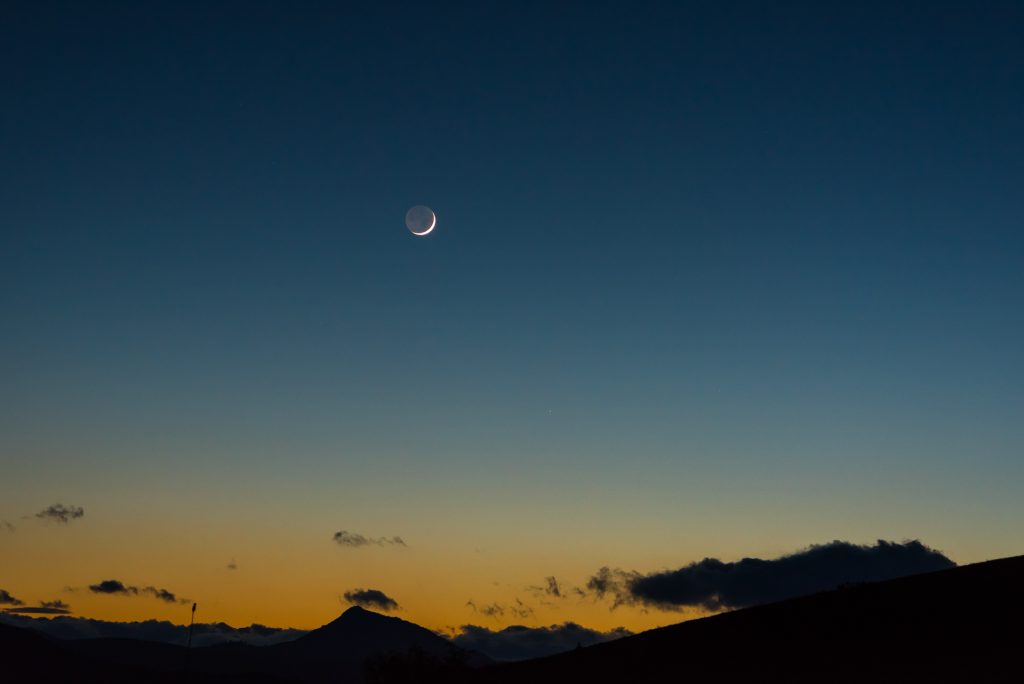Focusing for night photography is one of many difficulties specific to this genre of photography. Camera Auto Focus (AF) systems are pretty useless due to low light environment. Focus issues would be familiar to anyone who has ever tried night photography. I am going to list some techniques that I personally use to take nightscapes.
Infinity Focus
Many lenses have an infinity marking on the lens barrel. In fact it should be showing where the infinity focus is achieved for that lens, but in practice that very rarely is the case. There is additional complication for zoom lenses. Even if the marking was in a correct position, focus position would change every time we zoom in or out, so that marking is really just a rough guess and cannot be trusted. One may think rotating the focus ring all the way to the infinity direction would solve the problem but unfortunately it does not. There is usually no guarantee that the infinity focus is achieved. So the infinity marking should only be used as an indication.

Using the Moon or Distant Lights
If the moon is up in the sky or there is a distant light (like city lights) visible to you, focusing can be easier. Some camera AF modules are powerful enough to focus using those available lights. Moonlight is so bright, most cameras would allow auto focus on it. There are still some considerations:
- If you are using a zoom lens, do not try to acquire focus while zoomed in and then zoom out to take a picture. Do not forget that the focus point changes with focal length;
- When using the Moon or distant lights to auto focus and then you change the composition to take final picture, do not forget to disable AF after initial acquisition. Otherwise camera will try to re-acquire focus.

Using Stars
You cannot and you will not always shoot nightscapes during full moon nights. And distant city lights can not always be available. In such cases you can easily use bright stars in the sky to acquire focus. If your camera features Live View option, try the following procedure. You should use a sturdy tripod system for this:
- Switch off the camera AF and turn your lens to manual focus mode
- Turn on the LIVE VIEW mode
- Find the brightest star in the sky (just any) and place it in the center of the frame
- Use screen magnification to make the star bigger on screen (100% or 200% is enough)
- Turn the lens focusing ring slowly until the star comes to sharp focus
- This step is optional: use a gaffers tape to fix the zoom ring in position to avoid accidental rotation. Make sure you do this while LIVE VIEW is still on to ensure sharp focus is not lost when taping the focus ring.
After this procedure you are good to start shooting, given all other parameters are also set.

Final Words
This is a general advice: use the central part of the frame to acquire focus. Without going info much details, this is related to field curvature and focusing is best/easiest when using the central area of the frame.
All the techniques listed above are valid for any camera system. That being said you should always be familiar with peculiarities of your equipment. For example, focusing with telephoto lenses are usually easier but due to the narrow field of view and the Earth rotation, you will lose the bright star sooner than compared to wide angle lenses. But when using wide angle lenses to focus, there is another natural factor that to get the same magnification on screen for any star, you have to magnify it more multiple times.
I love technically perfect images, but we should never forget to get satisfaction from photography and sometimes digging into every pixel is not recommended. HAPPY SHOOTING!
Pingback: Practical Tips for Night Photography | Levan Verdzeuli